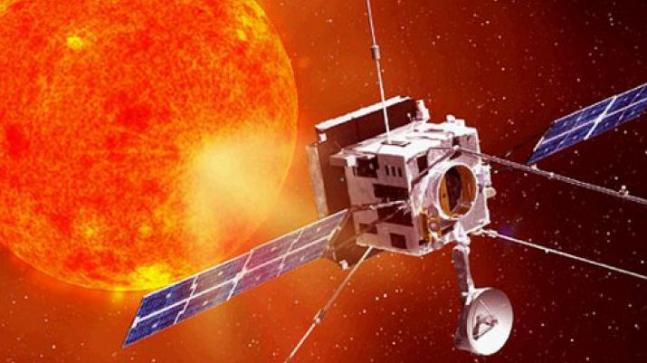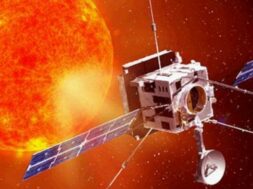
Manas Dasgupta
NEW DELHI, Aug 28: With the lunar mission almost fully accomplished as the Chandrayaan-3 rover has started detecting even threats to its path and re-routed, the Indian Space Research Organisation (ISRO) will be making foray into the solar mission scheduling its first space-based observatory to study the sun on Saturday.
An official of the ISRO said on Monday that its rover on the moon “Pragyan” was safely re-routed after it came face-to-face with a four-metre crater on the Moon’s surface. He said the rover had come across a four-metre crater on its path having spotted it at a safe three metres distance from the edge and was commanded to retrace the path and re-routed to a safer path.
The solar-powered rover will amble around the relatively unmapped region and transmit images and scientific data over its two-week lifespan. With only 10 days remaining for the completion of one lunar day, Nilesh M Desai, Director, Space Applications Centre (SAC) said the Chandrayaan-3’s rover module Pragyan, moving on the surface of the moon, was in a “race against time” and that the ISRO scientists were working to cover a maximum distance of the uncharted South Pole through the six-wheeled rover.
He said the moon mission’s three main objectives were: soft landing on the lunar surface, movement of the Pragyan rover and obtaining science data via payloads, attached to the rover and lander Vikram. “Our two main objectives have been accomplished successfully, but our third objective is underway,” the scientist said.
The Chandrayaan-3 mission’s lander module Vikram has successfully begun doing its set of experiments and subsequently relaying them back to the country’s space agency’s headquarters. The space agency has also released a graph of the temperature variation on lunar surface with increase in depth measured by the ChaSTE payload on-board Chandrayaan-3’s Vikram lander module.
India took a giant leap on August 23, as the Chandrayaan-3 lander module successfully landed on the Moon’s South Pole, making it the first country to have achieved the historic feat. The country became the fourth – after the US, China, and Russia – to have successfully landed on the moon’s surface.
With its confidence increased manifold over the success of Chandrayaan-3, the ISRO on Monday announced that Aditya-L1, the first space-based Indian observatory to study the sun, would be launched on September 2. “The launch of Aditya-L1, the first space-based Indian observatory to study the sun, is scheduled for September 2, 2023, at 11:50 Hrs. IST from Sriharikota,” ISRO posted on X.
According to ISRO, the spacecraft will be placed in a halo orbit around the Lagrange point 1 (L1) of the sun-earth system, which is about 1.5 million km from the earth. It is expected to take more than 120 days for the spacecraft to reach the L1.
“A satellite placed in the halo orbit around the L1 point has the major advantage of continuously viewing the sun without any occultation/eclipses. This will provide a greater advantage of observing the solar activities and its effect on space weather in real time. The spacecraft carries seven payloads to observe the photosphere, chromosphere and the outermost layers of the sun (the corona) using electromagnetic and particle and magnetic field detectors. Using the special vantage point L1, four payloads directly view the sun and the remaining three payloads carry out in-situ studies of particles and fields at the Lagrange point L1, thus providing important scientific studies of the propagatory effect of solar dynamics in the interplanetary medium,” states the Aditya L1 mission profile.
The suits of Aditya L1 payloads are expected to provide the most crucial information to understand the problem of coronal heating, coronal mass ejection, pre-flare and flare activities and their characteristics, dynamics of space weather, propagation of particles and fields etc.
The seven payloads on-board the satellite are Visible Emission Line Coronagraph, Solar Ultraviolet Imaging Telescope , Solar Low Energy X-ray Spectrometer , High Energy L1 Orbiting X-ray Spectrometer , Aditya Solar wind Particle Experiment, Plasma Analyser Package For Aditya ) and Advanced Tri-axial High Resolution Digital Magnetometers.














